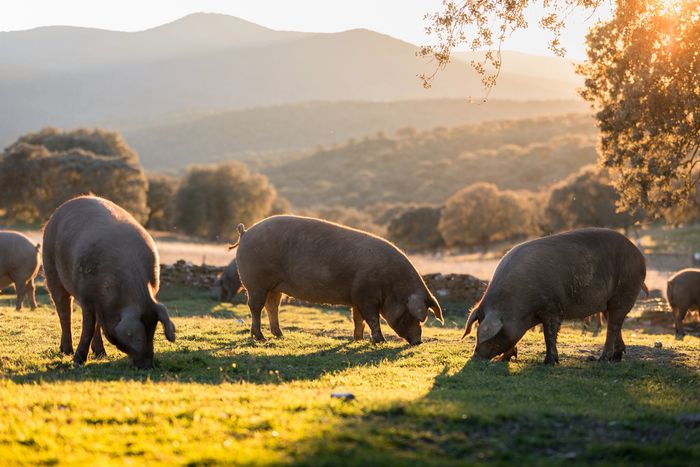

Subscribe
Sign up to hear from us about specials, sales, and events.
What To Expect From My Meat

Beef
Before I talk about meat yield, I want to talk about how I charge for my meat. My prices which you can find here, are per pound for finished meat. That means you are only paying for the meat that you get.
Some places charge a lower price per pound and that is because they are most likely charging you for hanging weight. There is only one person that should be charging for hanging weight, and that is the processor. The processor does that because they are handling the whole steer from start to finish, plus they need to sort and dispose of all the unusable stuff that the customer will not see.
Let's break it down. Using the averages from a couple of paragraphs down, let us say you are being charged $8 per pound on hanging weight. With a hanging weight of 750 lbs. x $8 = $6000. So, for a whole steer, you are spending $6000 at $8 per pound. But how much does that really come out for finished meat? Out of a whole steer that has a hanging weight of 750 lbs. approximately 260 lbs. of that (Bones, excess fat, and tendons) are going in the trash. You just paid $2080 for stuff that is going in the trash!!!
Let's break it down further. If your meat back to the customer on a whole steer is approximately 490 lbs., then $6000 / 490 = $12.24 per pound. Just something to think about. I only charge for the meat you are getting. So do not be fooled by those so-called lower prices, only pay for what you get.
The yield of edible meat from a beef carcass often comes as a bit of a surprise, even to those that have had their own meat processed for years. The percent of the live animal weight that becomes carcass weight, which for fed beef is usually around 63%. So, from a 1200-pound steer, you should get around a 750-pound carcass (hanging weight). But not all of that carcass is going to end up in your freezer.
The expected yield of finished meats (meat back to the customer) from a beef carcass is about 65% of the hanging weight as finished meats (roasts and steaks) and lean trim. You start with a 1200-pound steer, which has a dressing percent of around 63%, which should leave you with a hanging weight of around 750 pounds. From that, you will get about 65% of the hanging weight or roughly 490 pounds on a whole steer. It can vary from steer to steer so keep in mind these are just approximate averages.

Pork
I like to get my pigs to a weight of 300 pounds. The reason for this is fat content. Fat is where your flavor comes from. Typical commercial pigs are around 250 lbs. at the time of slaughter. They are much leaner, and this is why store-bought pork doesn’t taste as good as the meat I provide to my customers. Hanging weight is around 73.6 percent of the live weight. A 300 lb. pig will produce a carcass (hanging weight) around 220 lb. The hanging weight will yield approximately 147 pounds of meat back to the customer. These are all just approximations and will vary from pig to pig. So, figure on around 60-70lb. of meat on a half pig, and 120-140 lb. on a whole pig. I sell my halves at a flat rate. Click here for current pork pricing.

Lamb & Goat
Lamb and goat are very similar in size and anatomy, so they will be about the same on yield. They generally have about a 50% yield for the hanging weight and then about a 75% yield of meat from the hanging weight of approximately 50 pounds of meat from a whole 150-pound lamb or goat. These are sold mostly by the whole animal but can be split into halves. Click here for pricing.
Featured Products
4% service fee on all card transactions.
Cash, Check, Zelle, and Goldback

More ways to pay.
We are now accepting Goldback. To find out more about Goldback please click the button below.



